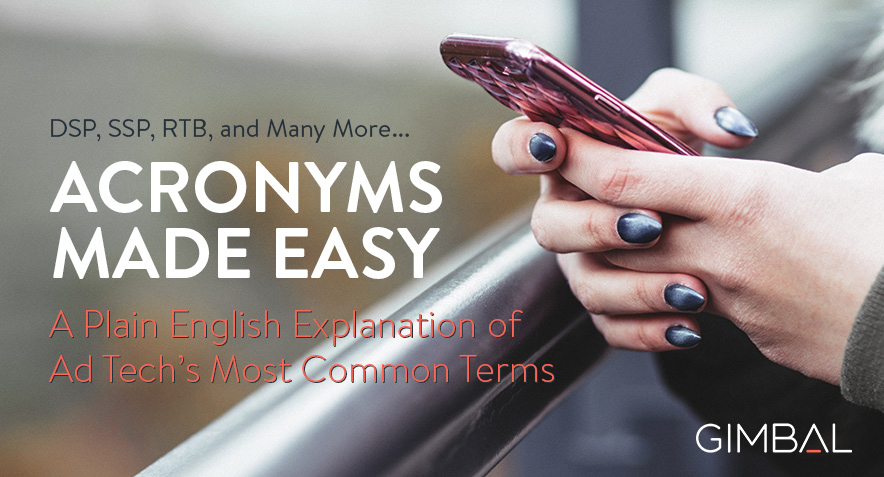Acronyms.
They can be helpful when technical terms are particularly too long, plus they keep your text messages short and concise. And, let’s face it, when used properly they can make you sound pretty smart.
But certain acronyms can also be the bane of your existence when you’re left confused and wondering if you used the correct one in an email to your entire global team, or on a conference call with a prestigious client.
This confusion is especially true in the mobile advertising industry where the similarities between terms like Supply Side Platforms (SSPs) and Demand Side Platforms (DSPs) can leave heads spinning more often than not.
Yes, we tend to use a whole lot of acronyms to describe mobile ad tech, but we aren’t doing this to make you look foolish to your peers.
In fact, we want to make you look even smarter.
This article will offer you (in plain English) the definitions of SSPs, DSPs and RTB. And if you can answer this question about each platform upon reading, you’ll look like a mobile ad tech wiz to practically everyone:
Who is the customer?
Mobile Ad Terms: The Difference Between SSP, DSP and RTB
What is a Supply Side Platform?
A Supply Side Platform (SSP) is a technology that helps publishers manage their advertising impression inventory and maximize revenue from digital media.
SSPs do this by gathering many types of advertising demand for publishers. This includes demand from both traditional ad networks and ad exchanges that is then aggregated by Demand Side Platforms (DSPs).
These plug into an SSP to bid on publisher inventory using Real-Time-Bidding (RTB).
Still confused? Here’s an even simpler definition: An SSP is used by publishers to maximize their earnings and offer inventory for sale to multiple ad exchanges and DSPs, directly.
So, who is the customer? If you guessed the publisher, you’re golden!
What is a Demand Side Platform?
A Demand Side Platform (DSP) is a centralized technology platform that helps to automate ad buying from multiple publisher sites.
DSPs help connect advertisers or advertising agencies to the right consumers through smarter, better audience targeting; sorting publisher inventory by their own unique parameters. DSPs also offer all-in-one technology focusing on not just ad buying, but the delivering and tracking of ads while utilizing proper data.
Still confused? DSPs make the searching and sorting of audience segments (i.e. age, gender, location, etc.) and inventory type (i.e. video, mobile, display, etc.) quick, efficient and affordable thanks to computer automation, maximizing ROI.
So, who is the customer? If you guessed the advertiser/advertising agency, great job, Ace!
Okay, so what’s RTB?
Sorry to throw in another acronym for you to juggle (not really, we already know you’re awesome at paying attention), but the definition of Real-time bidding (RTB) is also important to know when you’re talking SSPs and DSPs.
RTB can be defined as the process related to ad inventory and how it’s bought and sold instantaneously. This is done so using programmatic means (which you can learn about here). The auctions sell ad space provided by publishers to the advertiser willing to pay the top price each time a web page is visited. Ad exchanges and SSPs facilitate this process.
Still confused? Think about this everyday scenario: Say you open a browser and visit your favorite news site. The information about the page you are on plus information known about you is passed to an ad exchange or SSP. The ad that appears before you is directly targeted based on your wants, needs, location, etc. and was auctioned off to the highest bidder looking for a customer such as yourself. RTB helped with this process by loading the targeted ad almost instantly.
Still unclear about the difference between SSPs, DSPs and RTB? Download our free mobile advertising training guide for a more detailed look at what makes mobile ad tech tick. Afterall, we want to make you look smarter, even if you are a cheapskate.

